- Home
- [Beginning of Sake] - Let's learn more about Sake!
- 6. The taste of sake changes at temperature! Introducing how to cool and warm sake to drink sake deliciously!
6. The taste of sake changes at temperature! Introducing how to cool and warm sake to drink sake deliciously!
- 2021/2/28
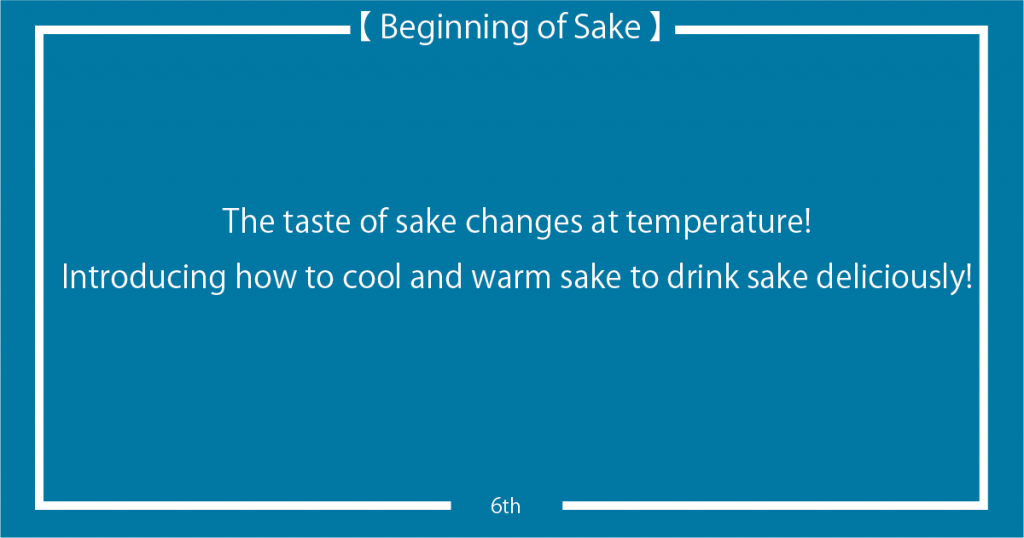

In the previous article, “Savor sake with fragrance! Introducing basic knowledge to become a connoisseur!“, we explained about the “aroma” of sake.
In this article, I would like to introduce the “temperature” that affects the “taste” and “fragrance” of sake.
Are you concerned about the temperature of alcohol when you drink?
For example, beer.
Drinking cold beer on hot summer days is very pleasant.
It’s easy to drink as much as makes you forget that it’s alcohol and drink it all at once. (Of course, depending on the product, I think the way it feels depends on the person.)
Now remember the beer you drink on hot day.
As I mentioned earlier, the first bite has a taste that makes you forget that it’s alcohol, so it feels like you’ll drink it all at once. However, as thirst subsides, drinking slows gradually.
When you drink beer that is no longer cold, you feel the unique bitterness of beer that you never felt before.
The taste of alcohol beverage varies with the temperature.
Most of the alcohol we drink is drunk at room temperature or cooled down.
The beer is a typical alcoholic drink that is drunk cold. White wine depends on the brand, but in specialty restaurants, it may be put in a wine cooler after opening.
Whisky and brandy drink at room temperature in the case of straight drinks and chilled drinks in the case of rock drinks.
So what about the case of sake?
Depending on the restaurants, when you ask for sake at an izakaya or other, the shop staff ask you, “Do you want it cold or warm?”
In the case of sake, in addition to “room temperature” and “cold,” sake may also be consumed in the form of “warm drinks”.
Except for sake, when ordering, you are not asked “Do you want it cold or warm?”
For example, when ordering beer, I think it’s (perhaps) absolutely impossible for a restaurant clerk to ask, “Would you like cold or warm beer?”
Most people will feel bad if they are served warm beer.
If you are whisky or brandy, ask if you are straight or locked. Instead of asking about the temperature at which the alcohol is served, however, it is asking how to drink it, such as whether to drink it as such or dilute it with ice or water.
However, in the case of sake, you are asked, “Do you want it cold or warm?”
Why?
Because the taste of sake varies with the temperature.
And that’s because Japanese people have known it since long ago, and they had a custom of enjoying the difference in the taste of alcohol, which changes depending on the temperature.
As a result of these customs, sake is used to produce the most appropriate sake for each temperature zone, such as “drinking cold,” “drinking at room temperature,” and “drinking hot.”
These types of alcoholic beverages do not seem to be seen much worldwide.
“So this time, I would like to explain how to enjoy sake from the view of “temperature”.
Contents
There is the name of temperature at which sake is served
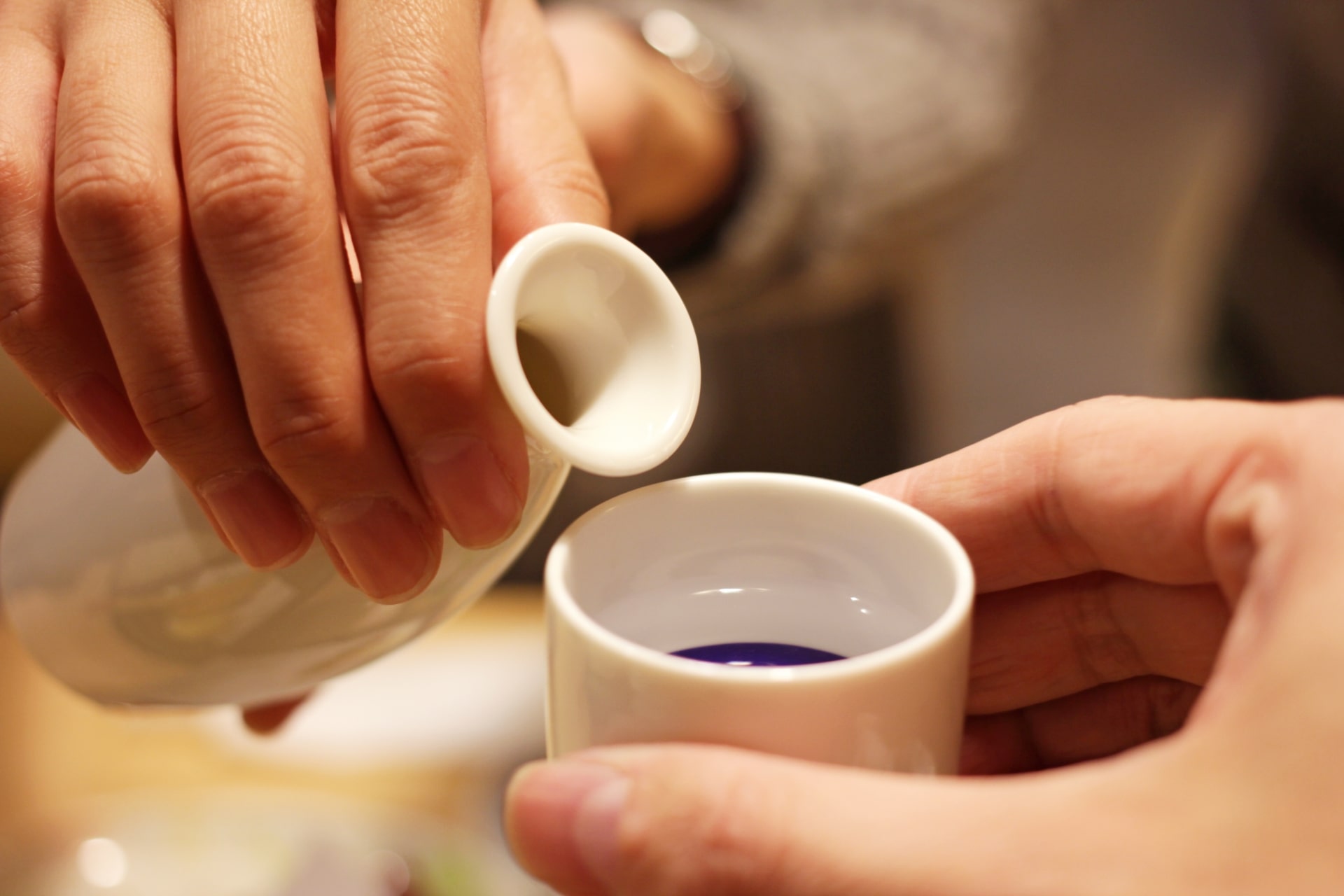
Sake is generally served “cold,” “at normal temperature”, or “warm”.
Until the 1955, there were only “at normal temperature” and “warm”. “At room temperature” was called “Hiya(cold)”, and “warm” was called “Kan”.
All but the artificially warmed was called “Hiya(cold)”.
Since there was a temperature difference between summer and winter, even in the same “Hiya(cold)”, the temperature in winter is around 5℃ and 20~25℃ in summer.
The temperature differed depending on the season.
From the late 1950s, refrigerators will begin to spread to ordinary households in Japan.
In 1975, refrigerators are placed in most homes (according to the Household Electrical Appliances Culture Association).
From around this time, they had begun to call refrigerated sake “Hiya(cold)” or “Hiyazake(cold sake)”, cooled or unwarmed products “Jo-on(normal temperature)”, and warmed products “Kan(warm)”.
Even if refrigerators become popular and they can cool liquor, they have not been able to adjust the temperature of the Earth.
Therefore, the temperature of the “normal temperature”, which is neither cooled nor warmed, remains different depending on the season.
For this reason, the definition of “normal temperature” differs in various media.
However, when drinking sake, you should roughly classify it as follows.
[Temperature range of cold, normal temperature, and warm]
| 0~20℃ | 20~30℃ | 30℃~ |
| Hiya (cold), Reishu (Cold sake) | Jo-on (Normal temperature) | Kan (warm) |
At present, cold sake are generally referred to as “Hiya (cold)”.
However, as mentioned above, “Hiya (cold)” was originally used in the sense of “at normal temperature”.
For this reason, ordering “Hiya (cold sake)” at some restaurants, you may be served not cold sake, or sake at normal temperature.
I don’t know what kind of restaurant in which it happens, so we can’t be careful, but when you order “Hiya (cold)” and get “normal temperature” served, you should remember that there may be a situation like above, and from that time on, you should try to ask “Reishu(cold sake)”.
Let’s remember the names of the temperature at which sake served!
As explained above, the temperatures at which sake is served are roughly divided into “Hiya (cold)”, “Jo-on (normal temperature)”, and “Kan (“warm”). In addition, there is a “name” for each temperature served.
This is summarized in the following table.
| Temperature(Celsius) | Name |
| 0℃ | – |
| 5℃ | Yukibie (as cold as snow) |
| 10℃ | Hanabie (as cold as flower die) |
| 15℃ | Suzubie (as cold as feeling nice) |
| 20 – 25℃ | Jo-on (Normal temperature) |
| 30℃ | Hinata-kan (as warm as in sunny place) |
| 35℃ | Hitohada-kan (as warm as body) |
| 40℃ | Nuru-kan (warm) |
| 45℃ | Jo-kan (a little hot) |
| 50℃ | Atsukan (hot) |
| 55℃ – | Tobikiri-kan (Very hot) |
The characteristics of each temperature are expressed in terms unique to Japanese.
Even with the same word “Ame (or “U”. “Rain” in English)”, “Kosame (light rain)”, “Konuka-ame (small rain”, “Kirisame (foggy rain)”, “Namida-ame (tear rain)”, and “Bi-u (light rain”, the fine sensibilities unique to Japanese people, with their various names due to their fine differences, are probably also evident in the temperature of alcohol.
Remembering these names is recommended because you can feel a little connoisseur.
Change in taste of sake with temperature
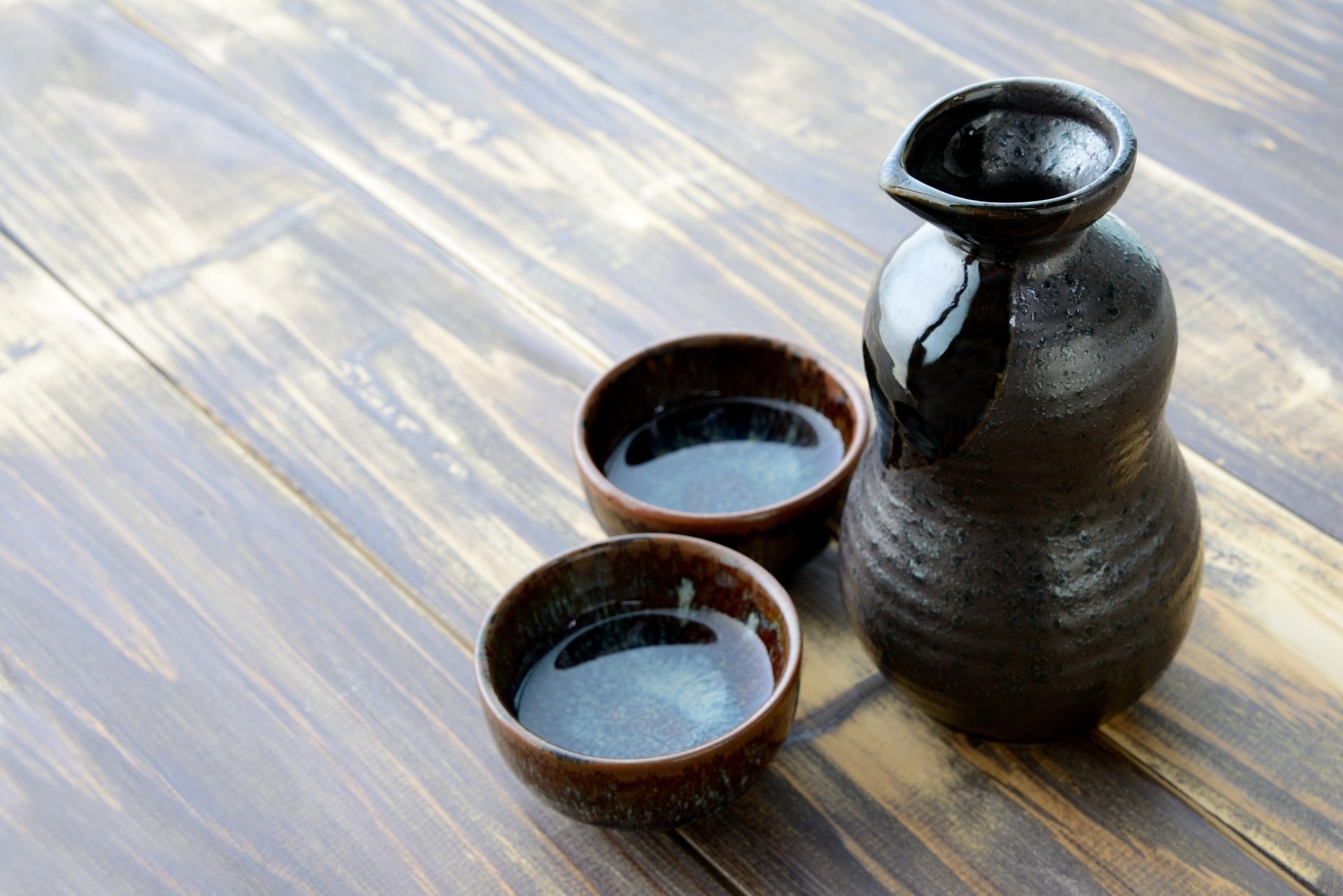
Thus, sake is served in a wide range of temperatures.
Why do they change the temperature at which you drink?
That’s because “the temperature changes flavor and fragrance of sake”.
Here, I briefly summarized how the temperature changes the taste and fragrance of sake.
| Cool | Warm | |
| Fragrance | Less susceptible to fragrance | Easier to feel fragrance |
| Taste | It is easier to feel the taste and the sweetness, while it is easier to feel sourness and taste of alcohol. | It is easier to feel the taste and the sweetness, while it is easier to feel sourness and taste of alcohol. |
Let us explain in more detail the changes caused by cooling and warming.
Change by cooling
Cooling sake causes the following changes:
“The fragrance and flavor feel refreshing”
“Tighten drinking spout”
Consider, for example, carbonated beverages such as colas and soda.
The fragrance and flavor of the cold cola and soda can be felt sweet but refreshing. Drinking soda in summer makes you feel exhilarated.
The same thing can be said with sake.
On the other hand, cooling sake has the following disadvantages.
“It’s hard to smell.”
“Sweetness and taste are difficult to feel.”
“Alcohol feeling increases.”
There are expressions “Heads or tails”, but the merits and demerits are expression by changing the way they are viewed to represent the same phenomenon, so from “the fragrance becomes difficult to stand up” to “the fragrance and flavor feels refreshed.”
Too many unpleasant elements are reduced to make it feel comfortable, which is the refreshing condition.
The same goes for “the sweetness and taste will be hard to feel.”
The sweetness of lukewarm cola is sugary.
That strong sweetness may be the original flavor of coke. When it is cooled down, the sweetness and flavor become difficult to feel, so it turns into a refreshing taste.
In addition, when sake is cooled below 5°C, it becomes difficult to feel the fragrance and taste.
So even if you cool down, it is better to set the lower limit to about 5°C.
However, sake such as “Mizore-zake” that should be frozen and tasted is another.
Be sure to cool it below 5℃ before drinking.
Change by warming
Changes in the warming of sake are as follows.
“The fragrance becomes easier to feel.”
“It makes it easier to feel the flavor and taste of sake”.
“The flavor becomes soft (mild)”
Coffee or tea is a good example. Warm coffee or tea can strongly feel its fragrance, but when it gets cold, its fragrance becomes less felt.
Introduced in “The taste of sake can be divided into four types!“, but the fragrance greatly affects the taste of foods and drinks.
As warming sake makes it easier to feel the fragrance, warmed sake makes it easier to feel its taste and flavor.
As for “the flavor becomes soft”, it would be easy to understand if you imagine taking a bath.
It is easier for baths filled with hot water to get in than cold water baths.
Similarly, if you warm sake moderately, the flavor becomes softer, making it easier to drink.
(In the baseball club of the university where I used to belong, they abused this and ordered sake warmed to make the members drink a large amount of alcohol at the drinking party…)
Note, however, that warming more does not offer the more benefit.
For example, if sake is warmed to boiling, the flavor ingredient evaporates vigorously, resulting in a loss of flavor or increasing alcohol irritation.
In addition, too hot liquor does not have a good mouthfeel. It’ll burn your mouth.
On the other hand, the disadvantage of warming sake is the following points, on the other side of the merit.
“A gorgeous or refreshing fragrance is spoiled”
“Alcoholic odor is prominent”
“The sweetness and sourness are emphasized.”
As an example, let’s introduce my experience.
Now, I have written an article to explain about sake in this site. However, when I started drinking sake, sake was the most disliked, and I particularly disliked warmed sake.
When I was a college student, when I began drinking alcohol, I was forced to drink warmed sake all at once at a club drinking party every time.
I remember that sake was poured into the oke which is large deep bowl for putting sushi in it and was forced to drink it all at once (although it would be a problem in the present age).
The sake that was forced to drink at that time was an awkward sake with a disgusting sweetness, bad smelling of alcohol.
Warmed sake was chosen because warmed alcoholic beverages tend to have a softer flavor and easier to drink, and also because they tends not to be drunk compared to cold alcoholic beverages.
However, instead of softening the flavor of alcoholic beverages, the disadvantages of warmed sake mentioned earlier are “the gorgeous or refreshing fragrance will be impaired,” “the alcoholic odor will stand out,” and “the sweetness and sourness will be emphasized.”
Nevertheless, “dislike” and “taste bad” are probably subjective.
At that time, I disliked drinking party, so it is probable that their feelings were biased.
At the time, I was forced to drink awkward sake at dislike drinking parties, so there was an awareness that “sake = awkward alcoholic beverages,” and in particular, I hated warmed sake.
Afterwards, in restaurants at which my friend’ worked, I wakes up with the good taste of sake by drinking the sake named “Takacho” and “Miyako-bijin” which is aged in 30 years.
When sake is warmed, the fragrance and taste of sake may change.
There are sake both suitable and unsuitable for warming.
Therefore, there is sake for warming.
Recently, the temperature at which the sake can be drunk deliciously has been described on label on the back side of bottle.
Therefore, when warming sake, please refer to those kinds of information to choose sake that can be warmed and enjoyed.
The database on this site also lists the temperature range where you can drink deliciously. Please refer to it.
How to cool sake to drink deliciously
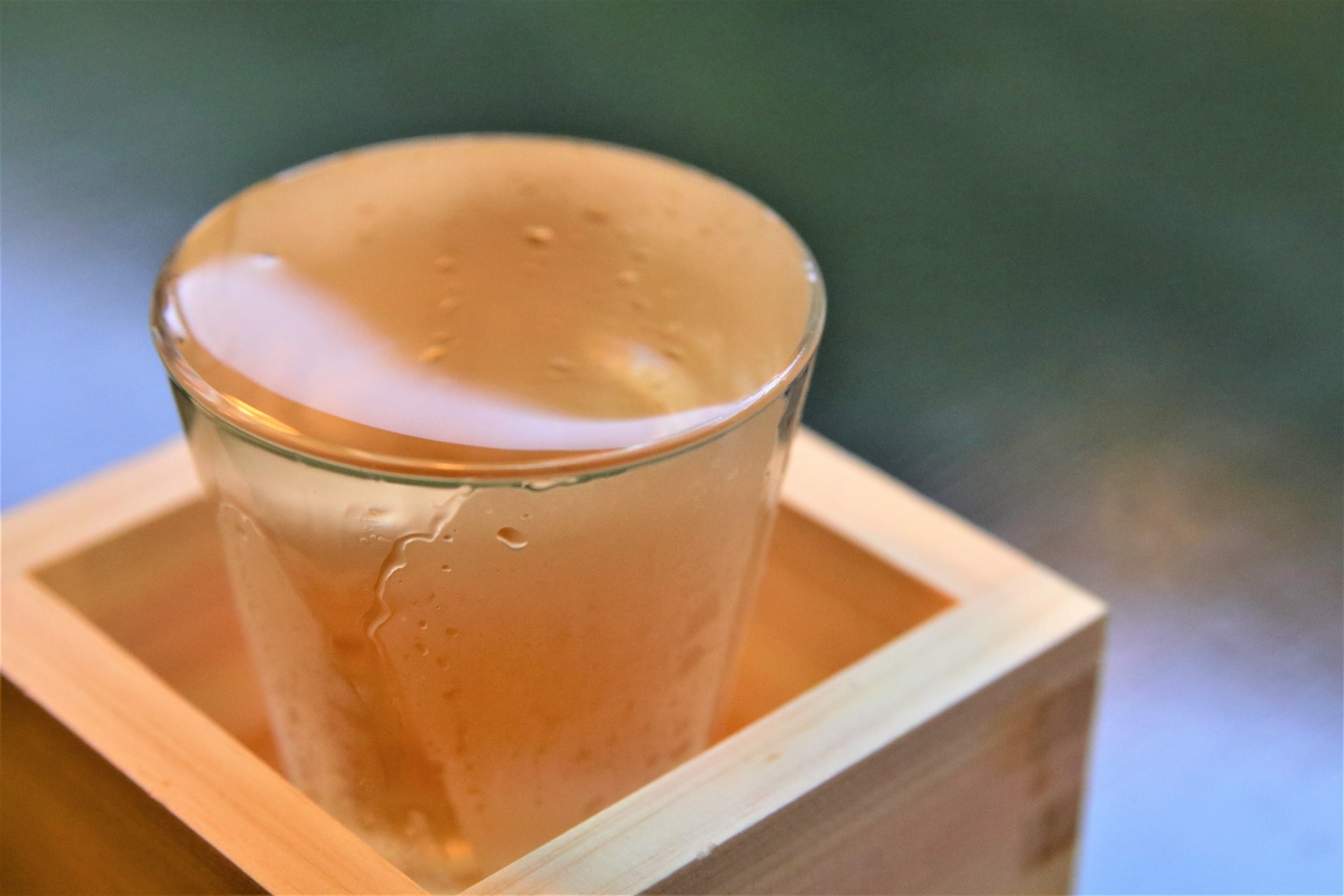
Now that we have learned about the changes caused by the temperature of sake, I will introduce you to how to cool and warm sake so that you can drink it deliciously.
First, it’s a way to cool.
There is way to cool sake, such as to “put it in a refrigerator” or “put it in ice water“.
Refrigerate in a refrigerator or freezer
The easiest way to cool sake at home is the “refrigerator”.
If the temperature inside the refrigerator is about 8℃, sake at about 20℃ will reach 10℃ in about 2 hours.
In other words, it takes about 2 hours to cool sake at room temperature to the extent of “Hiya (cold)”.
When cooling rapidly, some people may put it in a freezer.
An article on the website on which beer is cooled in a freezer, it takes 20 minutes to lower the temperature to 11°C, 30 minutes to lower the temperature to 6°C, and 50 minutes to lower the temperature to 2°C, when they freeze beer at about 20°C in a freezer.
Alcohol is said not to freeze. However, that is about alcohol beverage with a high alcohol content, and in the case of sake, it freezes when it is cooled to -7℃ or less.
It takes 70 minutes to reach 0°C and 140 minutes to reach-7°C, according to the results of the previous experiment.
Be careful not to put sake in the freezer for more than 1 hour.
By the way, by cooling the sake slowly and gently, it is possible to maintain the liquid state up to about-12 to-15°C.
If you add a little shock to this state of alcohol, the alcohol suddenly freezes and becomes like a sherbet.
This is called “Mizore-sake“.
If you are interested, try it out.
Cool with ice water
“Ice water” is also recommended if you want to cool sake quickly.
If sake is immersed in ice water, the bottle itself will reach the same temperature as ice water in about 1 minute.
Thereafter, the sake cools at a rate of 1℃ per minute, so it is calculated to cool the sake at 20℃ in about 11 minutes in order to bring the sake to 10℃.
The reason for cooling ice water faster than in a freezer is that there is a difference in thermal conductivity between gas, liquid, and solid.
Because heat (cold) is more readily transferred to solids than to liquids and liquids than to gases, ice water that uses liquids and solids cools faster than freezers that use cold gas.
How to warm up sake to drink deliciously
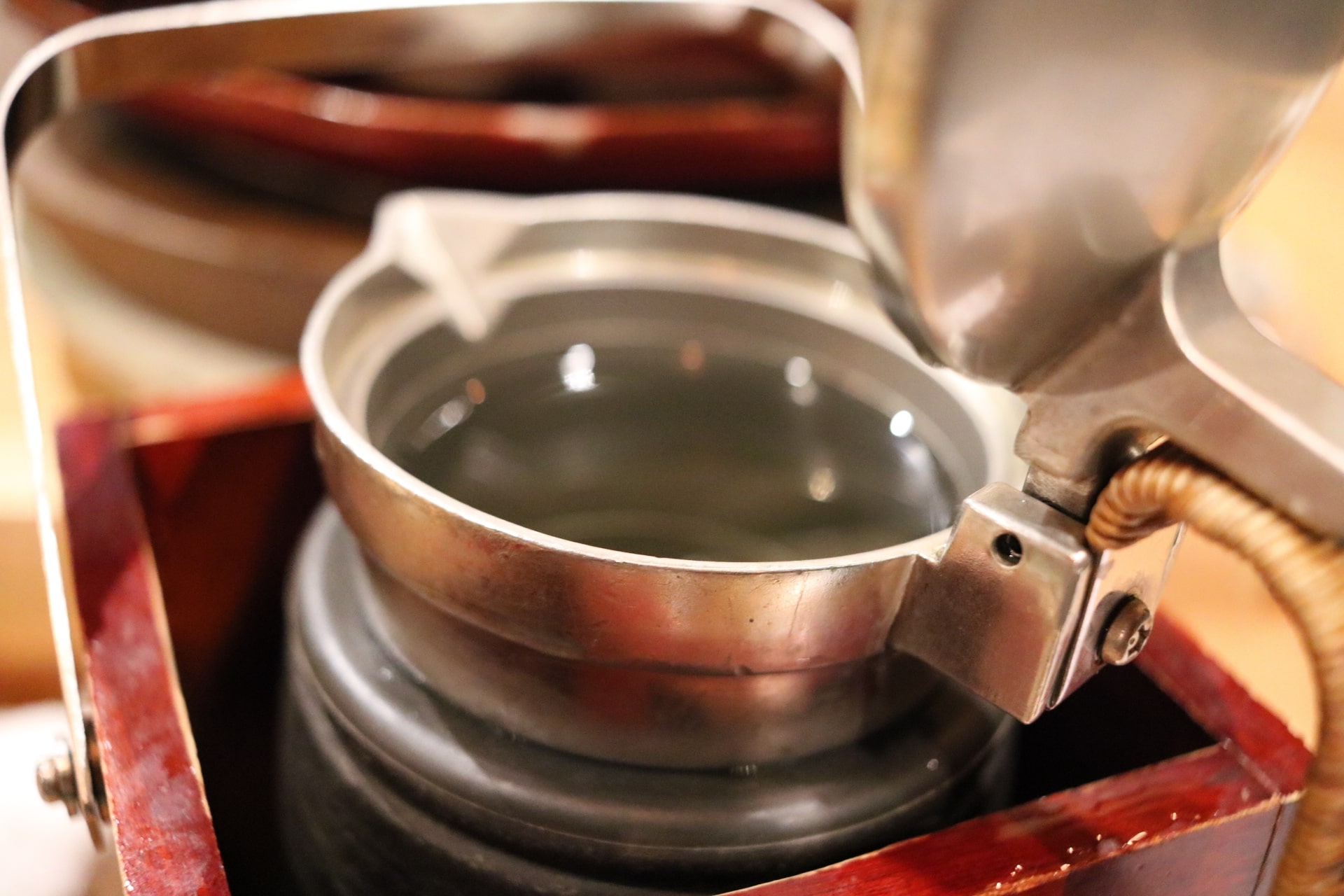
This is how to warm up.
The ways to warm sake are “Yu-sen (warm in hot water)”, “using microwave ovens“, and “warm directly“.
Warm in hot water
“Yu-sen (warm in hot water)” is a way that bottle filled with sake is put in hot water to warm.
The following is a method of “Yu-sen (warm in hot water)”.
- 1. Prepare a pot containing water to the extent that the bottle is half immersed.
- 2. After boiling the water, stop the fire and add bottle.
- 3. After about 2-3 minutes, the bottle is taken out when the sake rises to the mouth of the bottle (referred to as “Nibue (increase by warming)”).
If you feel hot with your fingers against the bottom of the bottle, it will be about 45 degrees.
Let’s enjoy sake at a suitable temperature while controlling the duration of soaking depending on your preference.
If you have time to spare, it would be better to warm it up carefully with “Yu-sen”.
Incidentally, when sake is soaked in hot water at around 80°C, the volatilization of alcohol is low and it is easy to finish in a gentle drinking spout.
On the other hand, when the temperature is about 100 ° C., alcohol tends to volatilize, and the disadvantage of warming (which tends to cause an alcohol odor or a strong irritating flavor) tends to appear, so be careful.
Warm in a microwave oven
“Microwave ovens” are recommended if you don’t want to spend time or effort warming sake.
In the case of 180ml, heating in a 500W microwave oven for about 40 seconds will warm to about skin temperature.
If you want to make a fine adjustment, rewarm in 20-second increments.
When warming up again, it is easy to set the desired temperature by shaking the bottle to make the temperature uniform.
Using a microwave is an easy to do it at home, so if you want to warm up sake and drink it, you should try using this method first.
However, when heating sake in a microwave, be careful of controlling the temperature.
This is because it is difficult to finely adjust the temperature in a microwave.
For example, when warming in bottle, the heat transfer is different between the thin neck and the thick bottom.
At this time, the temperature may become uneven and the taste may change.
As a countermeasure, cover with lap, etc. may be used. However, if the cover is heated too much, the lap may melt, so caution should be exercised.
There is also some opinion that heating in a microwave oven causes the drinking to become bad.
Scientific evidence seems to be scarce, but the difficulty of temperature control, as discussed above, may result in poor quality.
Warming directly
The method of warming sake directly in a pot is called ‘Jikabi-kan‘.
It is easier to finish warming than using bottle and warming in hot water, but it has disadvantages such as rapid volatilization of alcohol and difficulty in temperature control.
So, when you warm sake for the first time, it is better to warm bottle in hot water or microwave.
Warm in a hearth
For example, there is a way of warming sake in hot ash in Irori (traditional hearth in Japan) with a special shaped bottle like a pigeon called “Hato-tokkuri”.
The far-infrared effect of charcoal makes it very mild, but it is difficult to prepare hearth at home.
Therefore, I recommend the “Nokkanro (hearth for camping)”.
“Nokkanro” is a portable hearth designed to enjoy sake and cooking in the field.
It is the fastest way to see this website (http://www.nokanro.com/nokanro/), but there is a space to put charcoal in a rectangular box and a space to soak bottle, and we will use the heat generated by burning charcoal to boil water and warm sake.
Not only that, it can also be used to burn and roast foods by placing a net on top of charcoal.
It seems uncertain when the “Nokanro” was used.
According to the above site, there was a description of “Nokanro”, when Masamune DATE, a Conqueror of Oshu in the Sengoku period, sent his vassal Tsunenaga HASEKURA to the Pope (Keicho Japanese Embassy to Europe), he had an audience with Pope Paul V.
Therefore, it is said that it existed in the late 1500s or early 1600s at the latest and was used for cherry blossom viewing and excursions.
It is not heated with hot ash, but it is commonly heated in furnaces using the heat of charcoal.
The price is about 40,000 yen, but if you bring it to cherry blossom viewing or barbecue, you will definitely attract the attention!
If you are interested, please try to purchase it.
Warm with steaming
This is a warming method that has been attracting attention in recent years.
Place a bottle in bamboo steamer, and warm the sake with heat generated by the steam.
It is said that they can warm sake smoother than in hot water.
However, it takes much time and temperature control is difficult.
Another method is called “Warimizu-kan” in which about 10% of the water is added to sake to warm it.
Please be careful not to warm sake exceeding the boiling point of alcohol, 78.3°C.
Conclusion
This article introduces changes due to the temperature of sake, as well as how to cool and warm it.
Sake changes its fragrance and flavor by cooling or warming it.
Cooling and warming have advantages, but they also have disadvantages.
Therefore, if you remember the characteristics of both cooling and warming, you can enjoy differences in fragrance and taste due to temperature changes while drinking sake with delicious taste.
Once you understand the temperature changes in sake, you should remember how to cool and warm it.
If you know the right way, you can taste sake in just the right condition depending on the situation.
Especially with regard to how to warm sake, Japanese people have had the habit of warming sake and drinking it since ancient times, so we are developing various tools to warm.
If you warm up alcohol while paying attention to history, I think that the taste will be extraordinary.
Learn more about the world of sake and enjoy it more deeply by knowing how to drink sake due to the temperature range!
The next time is the 7th “Enjoying sake with utensil for sake! Explanation of the characteristics and selection of utensil for sake!!”
[References] SAKE SERVICE INSTITUTE(SSI), “MOTOI of NIHONSHU”, NPO FBO 2018It's our great pleasure if this article is helpful for you.
Restaurant Information
| Shop Name | |
|---|---|
| Prefectures | - |
| Tel | |
| Address | |
| Nearest Station | |
| Homepage | - |
| Business Hours | - |
| Holiday | |
| Introduction | |
| Sake List |
|

